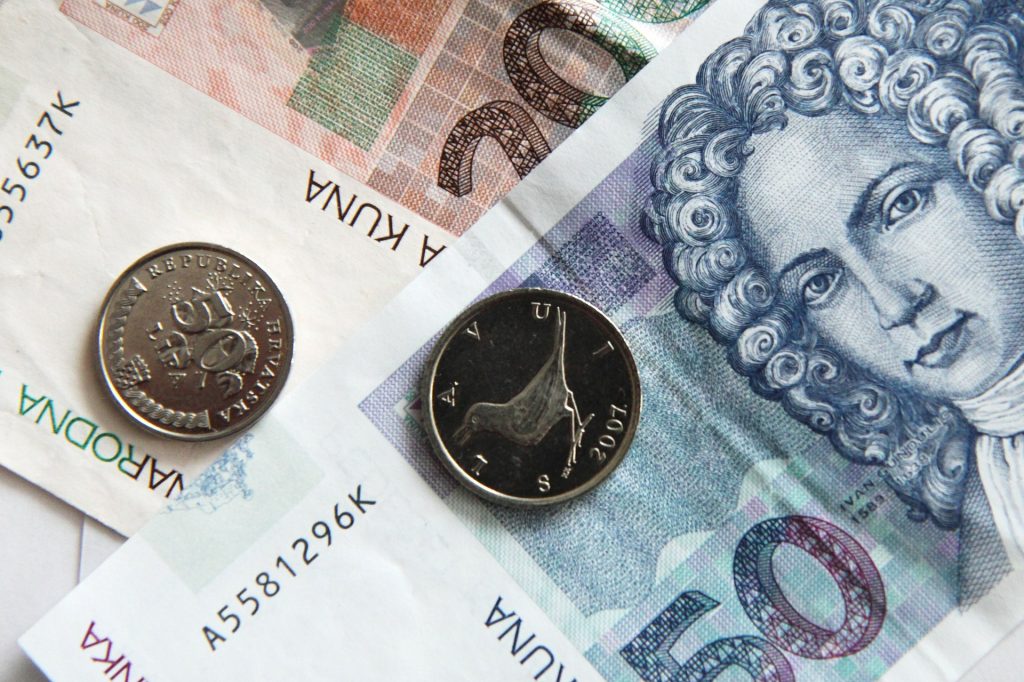As Poslovni Dnevnik/Jadranka Dozan writes, as is more than usual for the pre-election period, the past few weeks have bore witness to a mini-review of recent investment projects with occasional “ribbon cutting” taking place. The first estimate of GDP for the first quarter is expected, which will show how things are with the level of investment activity compared to the end of last year, as well as the comparable quarter of last year.
Gross fixed capital formation in the last quarter of last year, after an annual decline in the previous two, recorded a 4.2 percent increase. Thus, the decline in investments in 2020 was reduced below three percent, which is more favourable than the Government’s expectations from the revisions of the projections with the outbreak of the ongoing coronavirus pandemic.
In the May rebalance, the original plan for investment growth in 2020 was turned into an expectation of a 9 percent decline, and in October a reduction of six percent was expected. The final minus 2.9 percent is primarily due to the double-digit growth of general government investment of as much as 18.7 percent
In contrast, Croatian private sector investment, which has lagged behind the state sector for some time now, sank by a concerning 8.5 percent last year. For this year, the Government’s projections envisage 9.9 percent growth in terms of such investments, with a slightly smaller, but still double-digit growth in state ones (15.5 percent), counting on the recovery of Croatian private sector investment, at a rate of 8 percent.
Investment plans, and especially their implementation, are difficult to think of, let alone see in the business sector. Despite that, from some large companies, plans are on track to increase capital investment. Thus, for example, the Fortenova Group, which recently now finally includes Mercator, has planned to realise 125 million euros or close to one billion kuna in capital investments this year alone.
Among other things, with the integration of Mercator, significant investments in the retail network await them. After 192 million kuna of capital expenditures last year, Podravka intended 40 percent more than that for investments this year, ie 272 million, and for the next two years – about 200 million.
The Croatian Employers’ Association (Hrvatska Udruga Poslodavca/HUP) points out that their members, in addition to the investments that will be encouraged by the recovery programme, have launched their own investment cycles that are taking place now or will be completed at some point this year.
One of the most attractive investments in the eyes of the Croatian media at this moment in time is that of Rimac Automobili, Mate Rimac’s remarkable company which is in the phase of building a new campus, a factory and a test site. At the same time, HT and A1 are continuing their projects of modernising their network and embracing the much talked about 5G.
Following some tribulations, AT has been busy with work in Kanfanar and has invested over 200 million kuna in new lines for the production of heated tobacco products, and Vetropack Guard has started a new investment cycle. It is planning a greenfield investment on the HUM-Zagreb stretch, which will increase their production capacities, and it also intends to complete the project this year.
Furthermore, in the Porec zone, Pical Valamar will realise investments in the total amount of 1.5 billion kuna by the end of the year. This includes the Pinea Hotel, the largest single investment in the Croatian tourism sector worth a massive 790 million kuna, the construction of which began back in the autumn of 2020. Algebra is also completing investments in advanced IT infrastructure and international networks, and is also building a new University campus.
The above speaks volumes about the state of investments, at least those which have been pre-planned, in the Croatian private sector when compared to Government hopes and projections. That being said, the coronavirus pandemic continues to hold the keys to everything, and epidemiological changes for the worse could throw a proverbial spanner in the works.
“Part of the already prepared investments for this year have been stopped due to the coronavirus crisis, and members of the Croatian Employers’ Association have expressed a total readiness for about 40 billion kuna of investments in high value-added projects that will stimulate economic growth and development, as well as create 100,000 jobs in the Croatian private sector,” they pointed out from HUP.
However, as they have been warning for months now, they reiterate that without encouraging investment through the National Recovery and Resilience Plan (NPOO) and the EU Multiannual Financial Framework (MFF), many planned investments will not start because our country’s investment climate is still not good enough to attract significant foreign eyes, and as such foreign investment. That is why, they say, the NPOO is an opportunity like no other that Croatia must not and cannot afford to miss.
Government projections
These sources of funding were also taken into account in the projections recently presented in the Government’s Convergence Programme. In addition to the expected capital inflows from EU funds, and especially new instruments financed primarily by funds from the Recovery and Resilience Mechanism, it also envisages significantly faster growth of investment activities next year – at the general government level of more than 30 percent, and in the Croatian private sector, about 13 percent.
The Ministry of Finance expects, as they say, the continuation of favourable dynamics in the construction sector in the short term, largely due to the need to renew the housing stock after the earthquakes which rocked both Zagreb and Sisak-Moslavina back in March and December 2020.
“As a result of the projected effects of the NPOO, but also of the favourable base effect due to decent achievements from back at the end of 2020, expectations for the remaining types of investments have been significantly raised,” the Programme states.
However, the ongoing coronavirus crisis has placed the focus primarily on preserving financial stability for many and threatening the balance sheets of many others. This is especially true for small and medium-sized enterprises. In any case, in the corporate sector, the forthcoming period will impose the need to strengthen those enfeebled balance sheets for many, if not for the vast majority.
Doing business in a global pandemic
When it comes to large companies, one of the largest Croatian investors for years is of course INA, with annual investments at the level of between 1.5 and two billion kuna in the last ten years alone. Last year was one of the most challenging for this massive company, as it was for the global economy amid harmful lockdowns and difficulties with imports and exports.
According to INA, business operations during 2020 were adjusted to preserve the company’s financial stability and thus protect their long-term strategic investments, such as the project of building a processing plant in Rijeka, which will ensure the sustainability of INA’s business in the future.
This is an investment worth about four billion kuna, and thanks to the new plant, the product structure of the Rijeka refinery should be improved in such a way that the share of profitable white products, ie motor fuels, will increase. Work on the plant is underway, they say, and completion is expected by the end of 2023.
This project is part of the INA R&M New Direction 2023 programme, which envisages the concentration of oil refining in Croatia at the Rijeka Oil Refinery.
At the same time, sustainable alternatives are planned to be developed at their Sisak site, including bitumen production, a logistics centre and a solar power plant and potentially a bio-component refinery, all of which fit neatly into the European Green Plan and increasing global aspirations towards a low-carbon society.
”The biorefinery is a strategic project with an estimated value of around two billion kuna. We’re currently working on “further development and opportunities for additional co-financing of this project, which is a key prerequisite for making a final investment decision,” they said from INA.
For more on the Croatian private sector, follow our business section.








